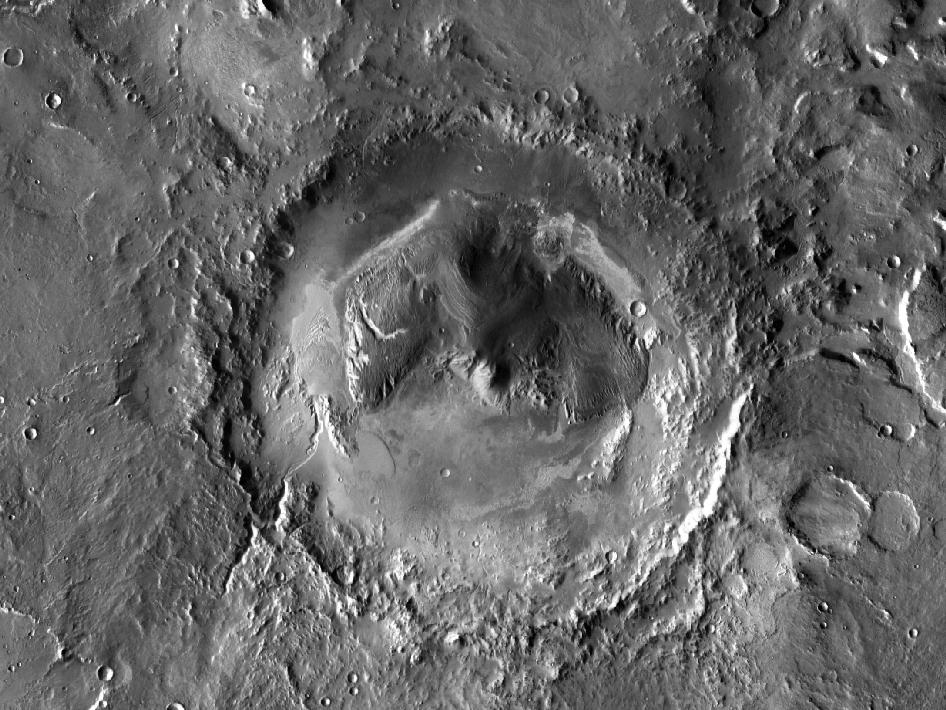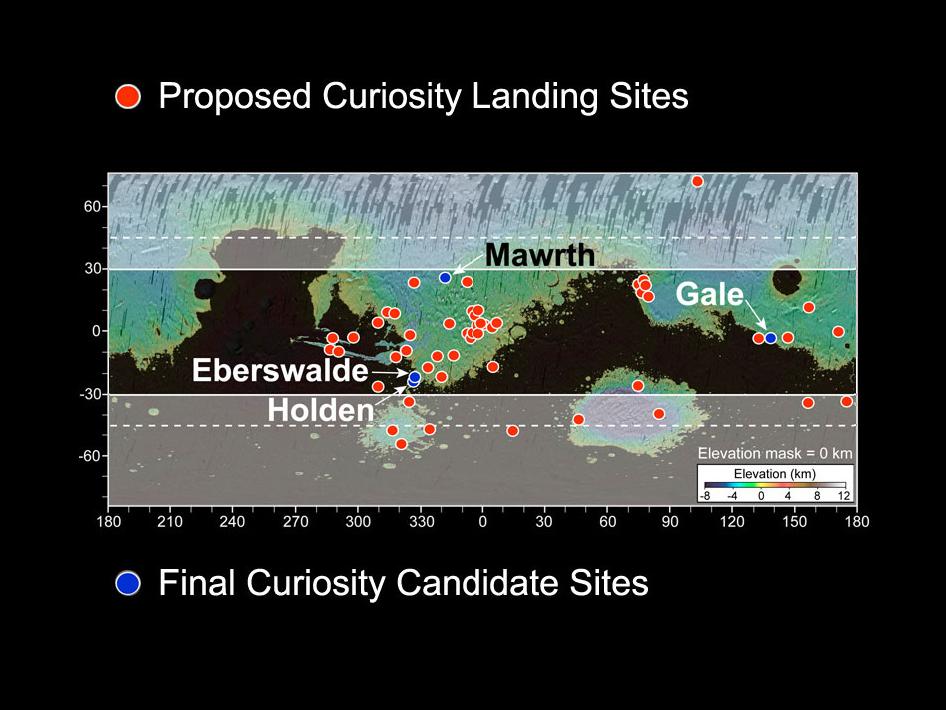A five-year debate over the landing site for the next Mars rover ended this past week (July 22, 2011) with NASA’s announcement that the Mars Science Laboratory, or Curiosity, will touch down inside the Gale crater, located near the planet’s equator.

Click here to expand image above
NASA had whittled the choices for the landing site down from more than 60 in 2006. Curiosity is the biggest Mars rover yet, more than twice the length and five times the weight of its predecessors Spirit and Opportunity. Astronomers had their eyes on the 96-mile Gale crater in 2004 but deemed the old rovers technically unable to land safely there. Curiosity runs on a nuclear-powered battery and has more precise landing capabilities, enabling it to reach the coveted spot.

Click here to expand image above
The rover’s main scientific goal on its 23-month-long mission (the length of one Martian year) is to continue the search for the possibility of life on Mars, past, present, or future. To that end, Curiosity will be exploring a northern part of the crater, where an alluvial fan – a deposit formed where a stream spreads into a wide opening – indicates a likely past presence of water. It will also be in driving distance of the foot of a mountain where deposits of clay and sulfates could provide another opportunity for life to develop.
A NASA press release <https://www.nasa.gov/mission_pages/msl/news/msl20110722.html> announcing the decision reads
Curiosity will go beyond the “follow-the-water” strategy of recent Mars exploration. The rover’s science payload can identify other ingredients of life, such as the carbon-based building blocks of biology called organic compounds. Long-term preservation of organic compounds requires special conditions. Certain minerals, including some Curiosity may find in the clay- and sulfate-rich layers near the bottom of Gale’s mountain, are good at latching onto organic compounds and protecting them from oxidation.

Click here to expand image above
The other three landing-site finalists had life-finding potential as well. Eberswalde Crater in the south features a clay bed leftover from a river flowing into a lake; Holden Crater has a similar history and topography. Farther north, Mawrth Valley attracted scientists with its layers of different clays and the fact that, unlike the other three sites, the rover would not have to travel to its science target after landing.
Curiosity is currently scheduled to launch in late 2011; it will arrive on Mars in August of 2012.











